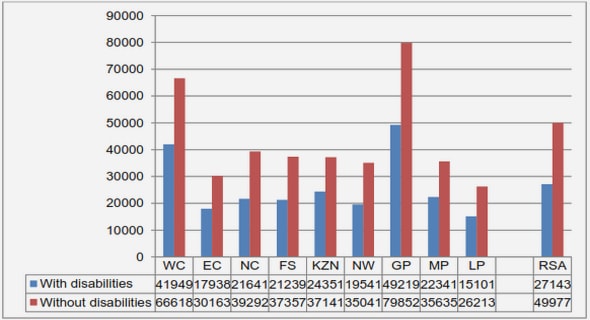(Downloads - 0)
For more info about our services contact : help@bestpfe.com
Table of contents
Introduction
Fermentation du glycérol pour la production de 1,3-propanediol en culture mixte sur une large gamme de pH
Electro-fermentation du glycérol en culture mixte : effet sur la sélection de population Couplage électronique entre bactéries fermentaires et électro-actives: coculture de C. pasteurianum et G. sulfurreducens
Conclusions et perspectives
Short introduction to the manuscript
Chapter 1. Literature review
1.1 Glycerol: an over-produced building block
1.1.1 The fast-growing market of biodiesel
1.1.2 Existing strategies for glycerol utilization and conversion
1.1.3 1,3-propanediol market and means of production
1.2 Fermentative metabolism of glycerol
1.3 Optimization of PDO production by glycerol fermentation
1.3.1 PDO-producing bacteria
1.3.2 Mode of operation
1.3.3 Operating parameters
1.4 A novel tool for fermentation control: electro-fermentation
1.4.1 From microbial fuel cells to electro-fermentation
1.4.2 A novel type of BES: the electro-fermentation system (EFS)
1.4.3 Operational strategies for electro-fermentation
1.4.4 Hypothetical mechanisms of electro-fermentation
1.5 Conclusion
Chapter 2. Methods
2.1 Overview of the materials and methods
2.2 Mixed culture glycerol fermentation over a range of pH (Chapter 3)
2.2.1 Inoculum
2.2.2 Fermentation medium
2.2.3 Fermentation set-up
2.2.4 Specific techniques and calculations
2.3 Mixed culture electro-fermentation of glycerol (Chapter 4)
2.3.1 Inoculum
2.3.2 Fermentation medium
2.3.3 Fermentation and electro-fermentation set-up
2.3.4 Specific techniques and calculations
2.4 Co-culture of C. pasteurianum and G. sulfurreducens (Chapter 5)
2.4.1 Inoculum
2.4.2 Fermentation medium
2.4.3 Fermentation set-up
2.4.4 Specific techniques and calculations
2.5 Pure strain cultivation
2.5.1 Anaerobic culture medium preparation for pure strains
2.5.2 Common vitamin and trace element solutions
2.5.3 Geobacter sulfurreducens
2.5.4 Clostridium pasteurianum
2.6 Analytical chemistry methods
2.6.1 High-performance liquid chromatography (HPLC)
2.6.2 Gas chromatography (GC)
2.7 Molecular biology techniques
2.7.1 DNA Extraction
2.7.2 Real-time polymerase chain reaction (qPCR)
2.7.3 Miseq Sequencing
2.7.4 Capillary electrophoresis single-strand conformation polymorphism (CE-SSCP)
2.8 Mass balance calculations
2.8.1 General calculations
2.8.2 Biomass estimation
2.9 Statistical analysis
2.9.1 Pearson correlations
2.9.2 Mean comparisons
Chapter 3. 1,3-propanediol production from glycerol in mixed culture fermentation over a wide range of pH
3.1 Introduction
3.2 Experimental design
3.3 Results
3.3.1 Effect of pH on fermentation products
3.3.2 Comparison with theoretical yields
3.3.3 Microbial communities and growth
3.3.4 Correlations between microbial community and fermentation patterns
3.4 Discussion
3.4.1 Effect of pH on microbial population
3.4.2 pH-induced H2/Formate shift
3.4.3 Ethanol production
3.4.4 Towards high PDO concentrations
3.5 Conclusion
Chapter 4. Electro-fermentation triggering population selection in mixed culture glycerol fermentation
4.1 Introduction
4.2 Experimental design
4.3 Results
4.3.1 Impact of electro-fermentation on metabolic patterns
4.3.2 The addition of Geobacter sulfurreducens increased PDO production
4.3.3 Microbial communities in the bulk
4.3.4 Non-turnover cyclic voltammetry
4.3.5 Population selection on G. sulfurreducens pre-colonized electrodes
4.3.6 Estimated metabolic patterns and clustering of the OTUs
4.3.7 Model accuracy and robustness
4.4 Discussion
4.4.1 Clostridium celerecrescens as a potential electro-fermentative bacteria
4.4.2 Selection effect versus individual metabolic shift
4.4.3 Electro-fermentation: towards a better PDO production
4.5 Conclusions
Chapter 5. Electronic interactions between fermentative and electro-active bacteria: co-culture of C. pasteurianum and G. sulfurreducens
5.1 Introduction
5.2 Experimental design
5.3 Results
5.3.1 Growth of G. sulfurreducens and C. pasteurianum in co-cultures
5.3.2 Metabolic patterns shifted during co-cultures
5.3.3 Metabolic shift of C. pasteurianum
5.3.4 Effect of G. sulfurreducens growth on C. pasteurianum production yields
5.4 Discussion
5.4.1 G. sulfurreducens using C. pasteurianum as sole electron acceptor
5.4.2 Is nanowire expression the key for DIET?
5.5 Conclusion
Conclusions & perspectives
Mixed culture fermentation for the production of value-added chemicals
Electromicrobiology as a new approach to conduct biotechnologies
Opportunities for electro-fermentation
Appendix A: Metabolite recycling
Bibliography




